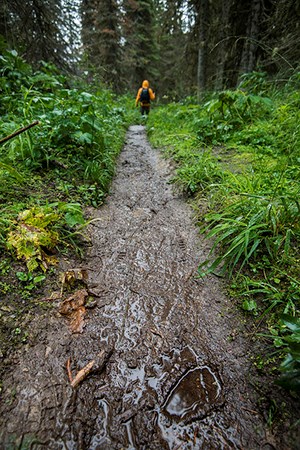
NPS/Tim Rains Soil is the basic resource upon which all terrestrial species depend. It is necessary for the growth of vegetation, which in turn is used by many species for food and habitat, but it also supports buildings, roads, and trails on which humans depend. The formation of the diverse soils of Glacier stem from a varied history which includes ancient seas, glaciers, volcanoes, and floods. What lies beneath the landscape, in the literal sense, is the place where it all begins, and ends, and continues. Soil is the giant recycling center of the planet, turning death back into new life. In the classic soil profile, there is an organic layer on top composed of mostly plant leaves and decayed logs, a layer below leached by water movement and below that an area of chemical accumulation atop the parent pure-mineral material. In Glacier, soils would generally be classified as poor for traditional human uses. The elevation is too high, slopes are too steep, climate is too cool and soils too thin. Alluvial soils (formed by water movement) comprise 3% of Glacier's soils, wet soils less than 1% percent, glacial and landslide soils 39%, and bedrock soils 55% of the total. The bedrock soils are usually thin and support sparse vegetation. In the alpine tundra areas, intense frost action has formed the soils into parallel turf-banked terraces on gentle slopes, and ice wedge polygons common on arctic tundra. Curiously, plants grow mostly on the sloped sides of the terraces. Plantlife Dating Soil |
Last updated: June 19, 2016
